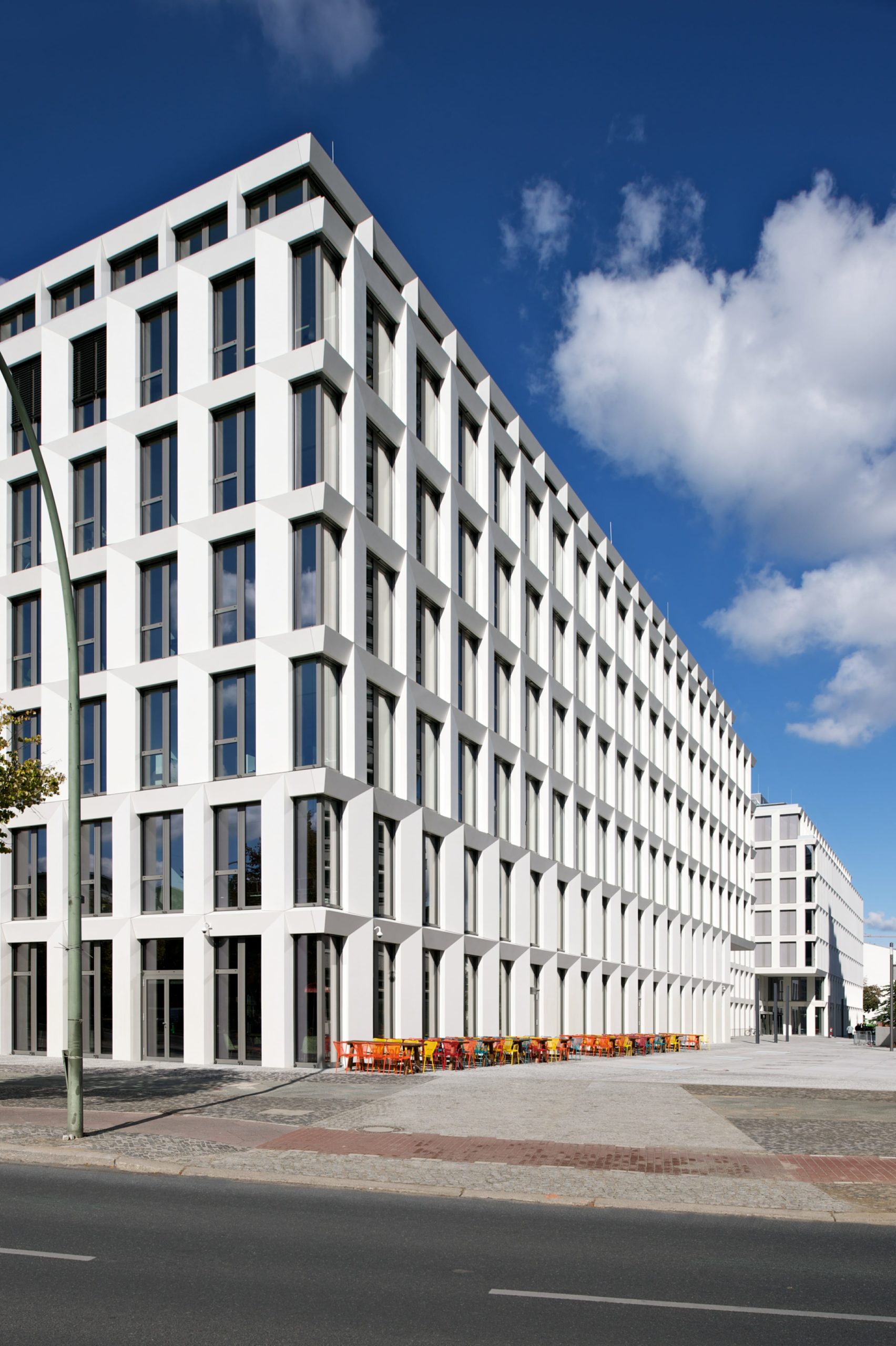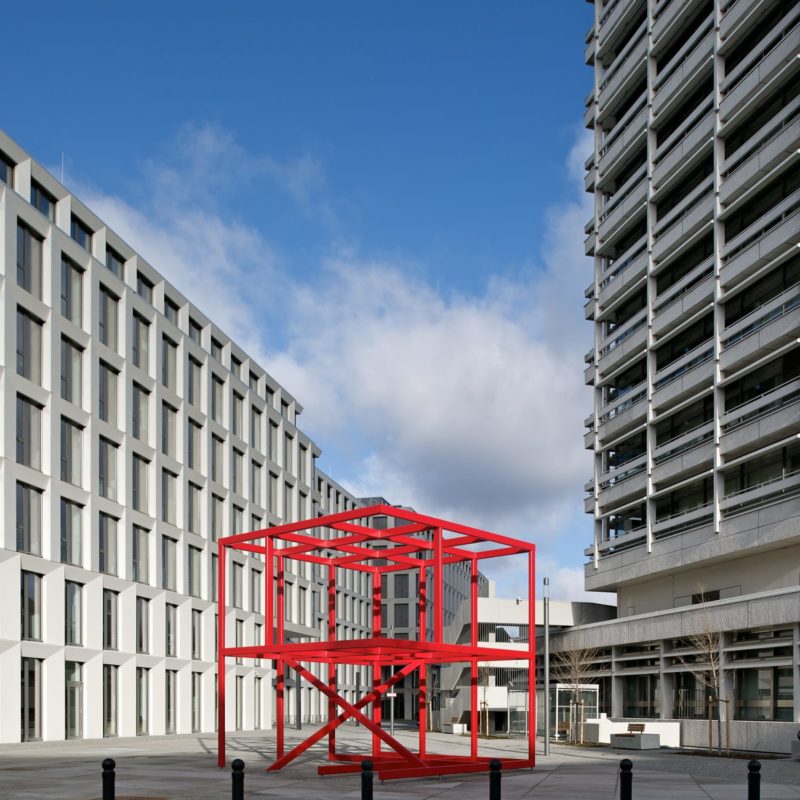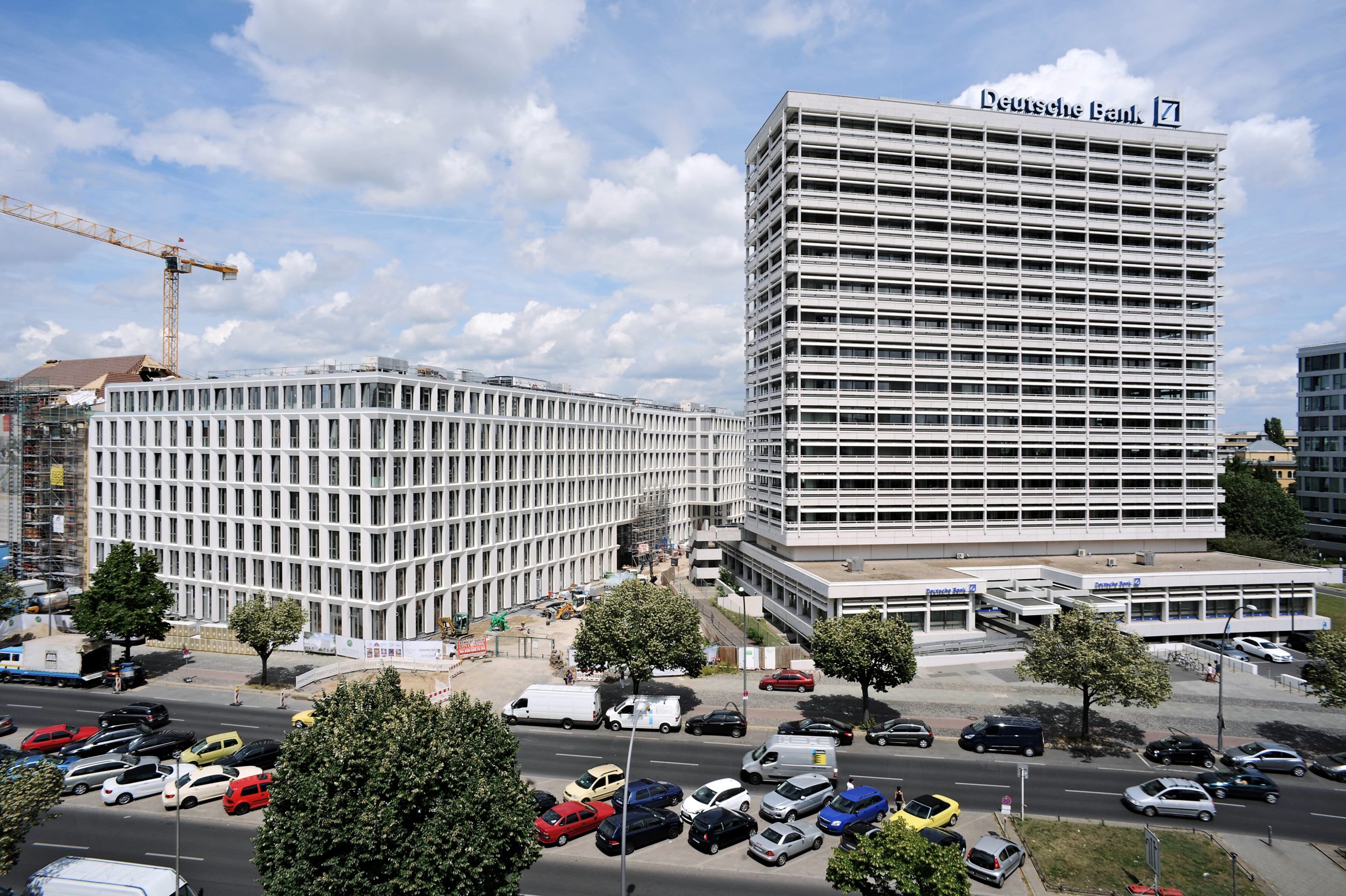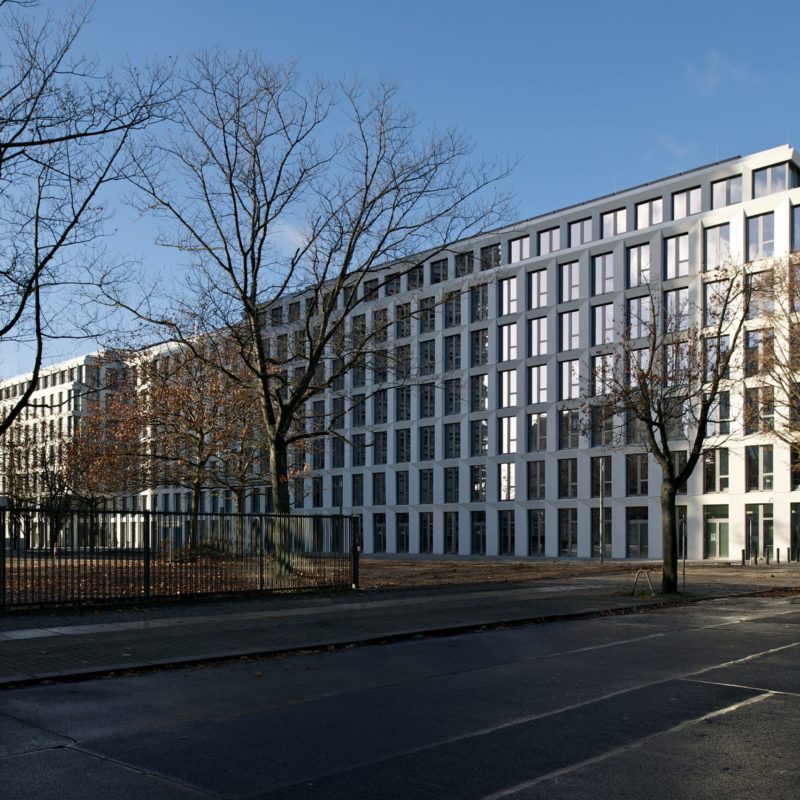Deutsche Bank Campus, Berlin
Symbolic location
When the Berlin architect Günther Hönow built the impressive bank building around the corner of Ernst-Reuter-Platz in 1966, this was the setting for the “New Berlin”. With the arrival of innovative digital laboratories such as Deutsche Telekom Laboratories or the Charlottenburg Innovations Centrum (CHIC), the square has once again become a scene for the “New Berlin”, a creative interface in the middle of the city.

Deutsche Bank Campus Facts

DEUTSCHE BANK CAMPUS IN DETAIL
Perfect proportions
The architect Günther Hönow (1923-2001) built the 15-storey building with 13,500 m² of floor space with a sense for form, colour and material effects. The high-rise building consists of a reinforced concrete skeleton. The all-round galleries carry white-enamelled lamellas of light metal. The balustrade and the lamellas emphasize the horizontal of the high-rise building – already in 1968 the office spaces could be designed variably. As part of the upgrading measures, the building received LEED “Gold” certification for Leadership in Energy and Environmental Design.

Scene of the systems
The Ernst-Reuter-Platz is not only one of the largest urban squares and traffic junctions in Western Europe, it is also a scene of the systems. This is where the most renowned architects of German modernism built – and literally underpinned the West Berlin claim to pioneering architecture and urban planning in the battle of systems at the city’s central showcase address.

In the middle of various possibilities
Around the Ernst-Reuter-Platz are important institutions such as the TU Berlin, Telekom Innovation Laboratories, large retail chains and residential buildings with cafés. The branching traffic axes lead to the Tiergarten, various Berlin sights and the towering new buildings at the Zoologischer Garten. You’ll be fast everywhere if you don’t want to linger in front of the central water fountain.
